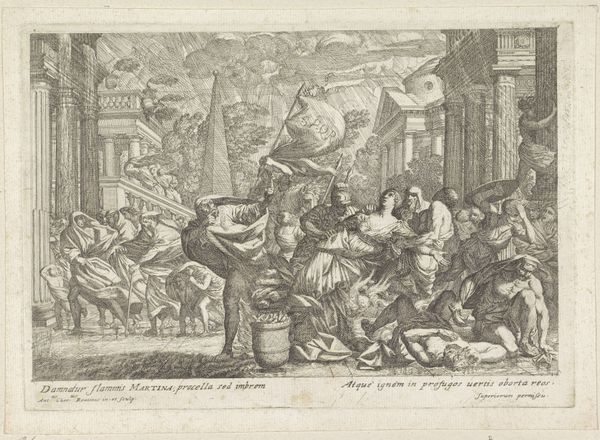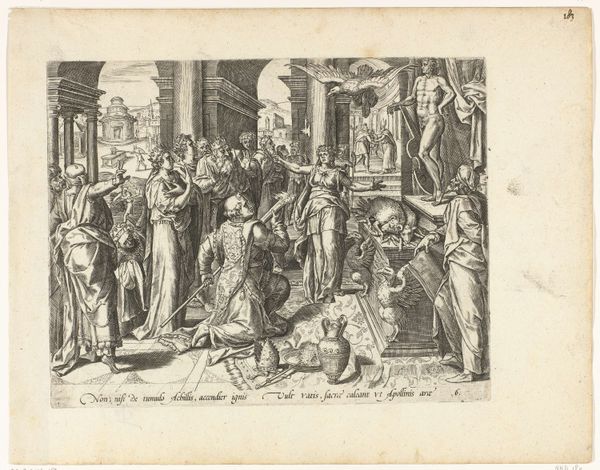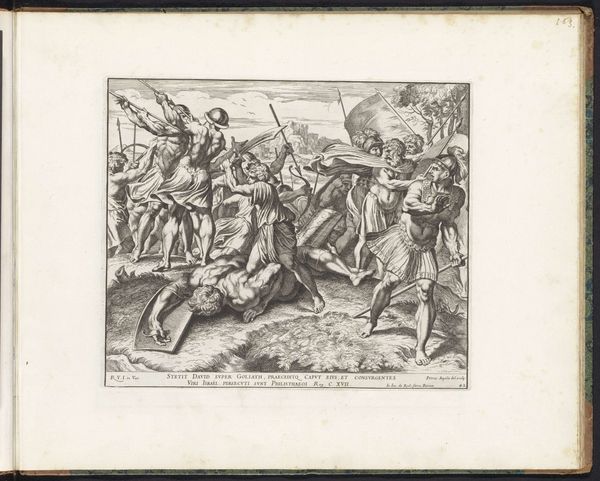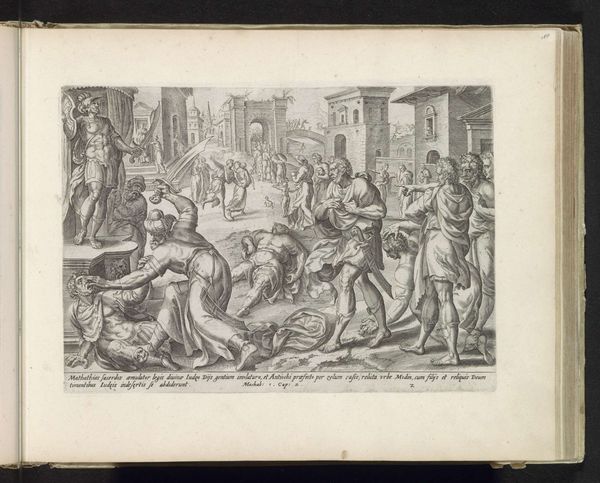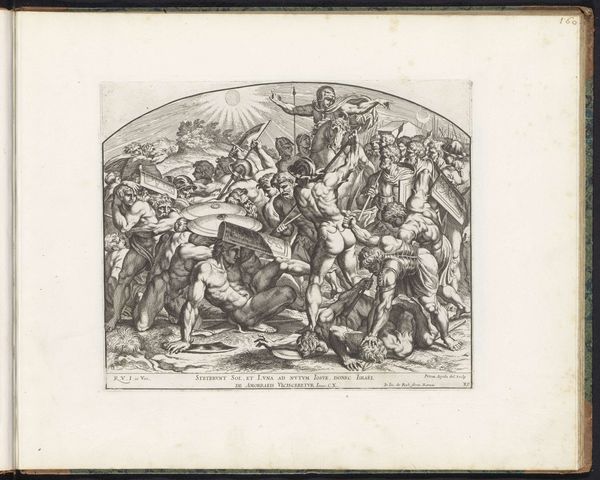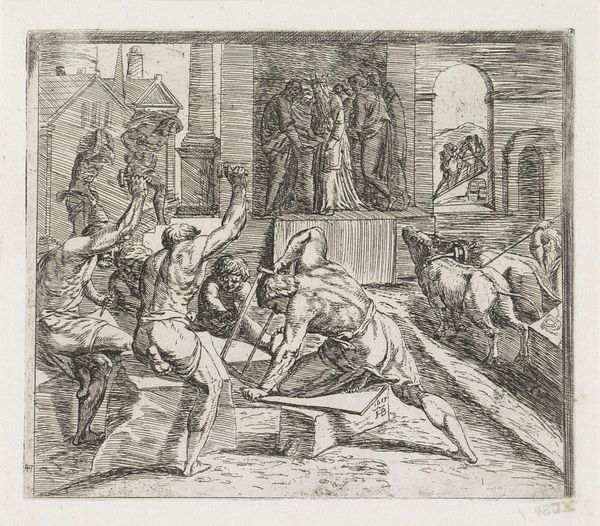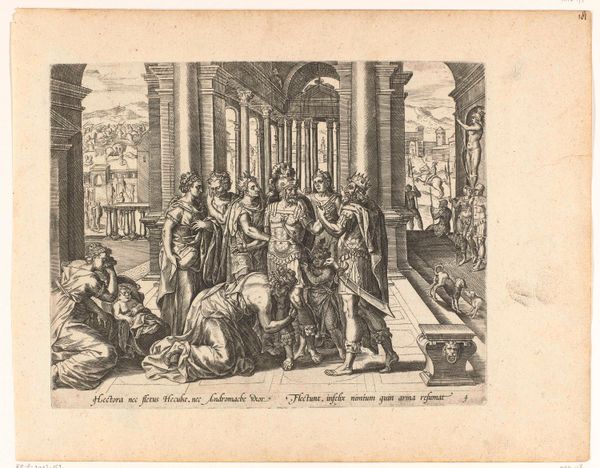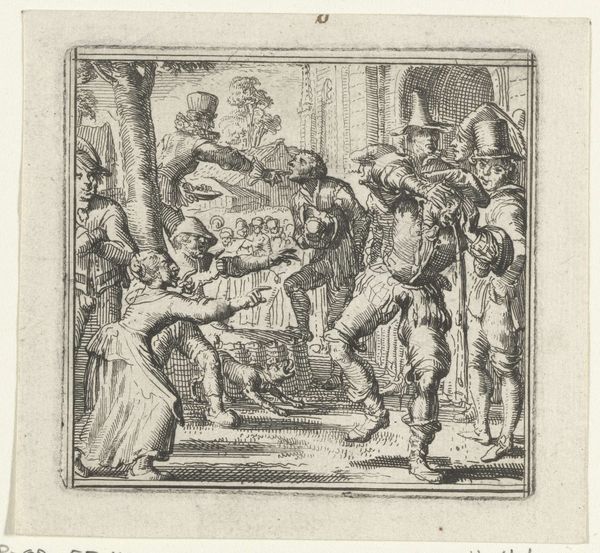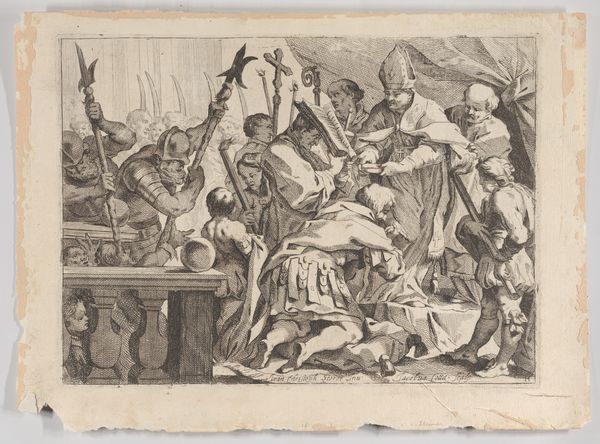
print, intaglio, engraving
# print
#
intaglio
#
figuration
#
11_renaissance
#
history-painting
#
northern-renaissance
#
engraving
Dimensions: height 202 mm, width 257 mm
Copyright: Rijks Museum: Open Domain
Pieter Jalhea Furnius created this print, 'Death of Paris,' in the Netherlands during the late 16th or early 17th century, using etching and engraving. This violent scene of Paris's demise reflects the cultural fascination with classical mythology and the use of such narratives to explore themes of morality and fate. The image employs visual codes typical of the period: classical architecture, dynamic figural compositions, and detailed armor, all designed to evoke the grandeur and drama of ancient stories. Produced during the Dutch Golden Age, a time of significant social and political upheaval, the artwork can be seen as commenting on the instability and violence of its own time, veiled behind the classical subject matter. It presents a self-consciously progressive view by using classical imagery to explore contemporary issues. Historical analysis reveals how the piece was influenced by both humanist intellectual traditions and the rise of print culture, which allowed for wider dissemination of such allegorical scenes. Through examining the social conditions and institutional contexts in which art is produced, we gain a deeper understanding of its complex layers of meaning.
Comments
No comments
Be the first to comment and join the conversation on the ultimate creative platform.
